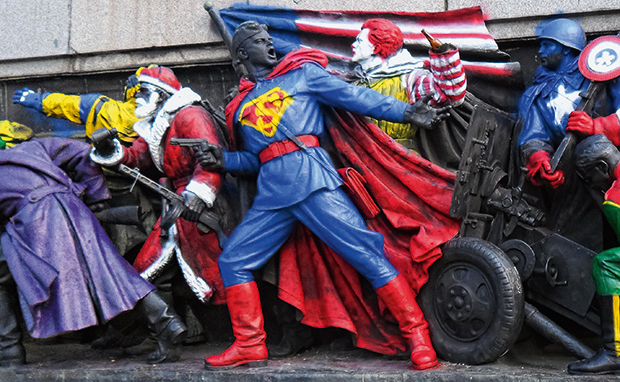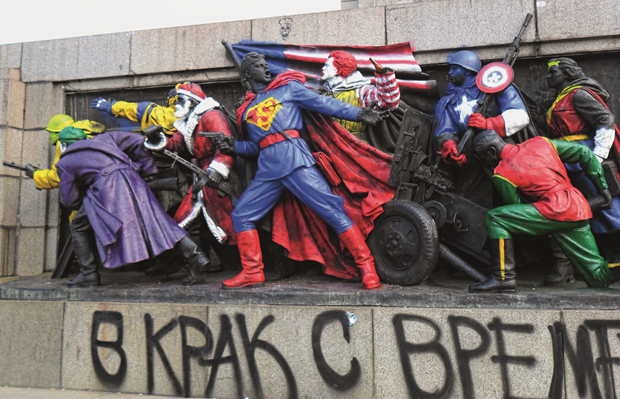
Moscow’s graffiti foreign policy
Should the Russian Foreign Ministry really try to clean up Bulgaria’s Soviet Army Monument?
It was Winston Churchill who once described Russia’s foreign affairs as "a riddle wrapped in a mystery inside an enigma"; and it’s a description that seems as apt today as it was when the British prime minister spoke those words, at the beginning of the Second World War.
Many in the art world thought Manifesta 10, Europe’s roving art biennial, would have riled Moscow during its St Petersburg iteration. The event, which runs until 31 October, is the first to be held in Russia, and the first since the passing of Russia’s egregious anti-gay laws. Yet, despite much veiled criticism of the Russian Federation’s censorship, the show has gone off without a hitch.
Meanwhile, two thousand kilometers further south, in Sofia, the capital of its former Eastern Bloc ally, Bulgaria, Russian officials have lodged formal complaints regarding some local graffiti.
Russia’s INTAR TASS agency reports that the Russian Foreign Ministry has “expressed deep indignation over the desecration” of Sofia’s Monument to the Soviet Army.
“In connection with the outrageous act of vandalism,” the agency states, “a note of protest was promptly lodged with the Bulgarian Foreign Ministry with a demand for taking measures to prevent such incidents in the future, bringing those responsible for breaching the law to justice and putting the grave and the monument in order."

This 1954 monument to the Soviet Army’s travails in World War II has been altered over on a number of occasions. In 2011, graffiti artists made the figures resemble figures from America popular culture, as our Wild Art authors note.
“The artist seems to have intended to ‘update’ this war monument to reflect Bulgaria’s current capitalist obsessions,” write David Carrier and Joachim Pissarro in our book, “as his slogan reads, ‘In Step With The Times’. It is interesting to note the political charge of this impressive work, which demonstrates how graffiti can be used across the world to deliver caustic, bitter messages against ruling systems. In this instance, a sophisticated public intervention conveys that there is not an exit out of the Americanization of world culture, suggesting that the real victors of Stalingrad in 1942 were not the Soviet Red Army, but a band of characters whose existence is the product of American dreams and fantasies.”
To be fair to Moscow, the latest bit of unauthorized paintwork to be added to the monument was a sloppier than the 2011 reworking; earlier this summer it was painted pink to mark the anniversary of the Soviet invasion of Czechoslovakia, bringing the Prague Spring to a close.
Nevertheless – Russia’s huge and valiant World War II losses not withstanding - you can’t help but feel that dealing with local vandalism via diplomatic channels makes Russia appear to be just the kind of swingeing super-state the graffiti artists are seeking to lampoon. In short, we shouldn’t underestimate the power of art outside the gallery setting. For more on this go here. For greater insight into art outside the art world, buy a copy of Wild Art and for more on state propaganda during the 20th, consider Iron Fists.